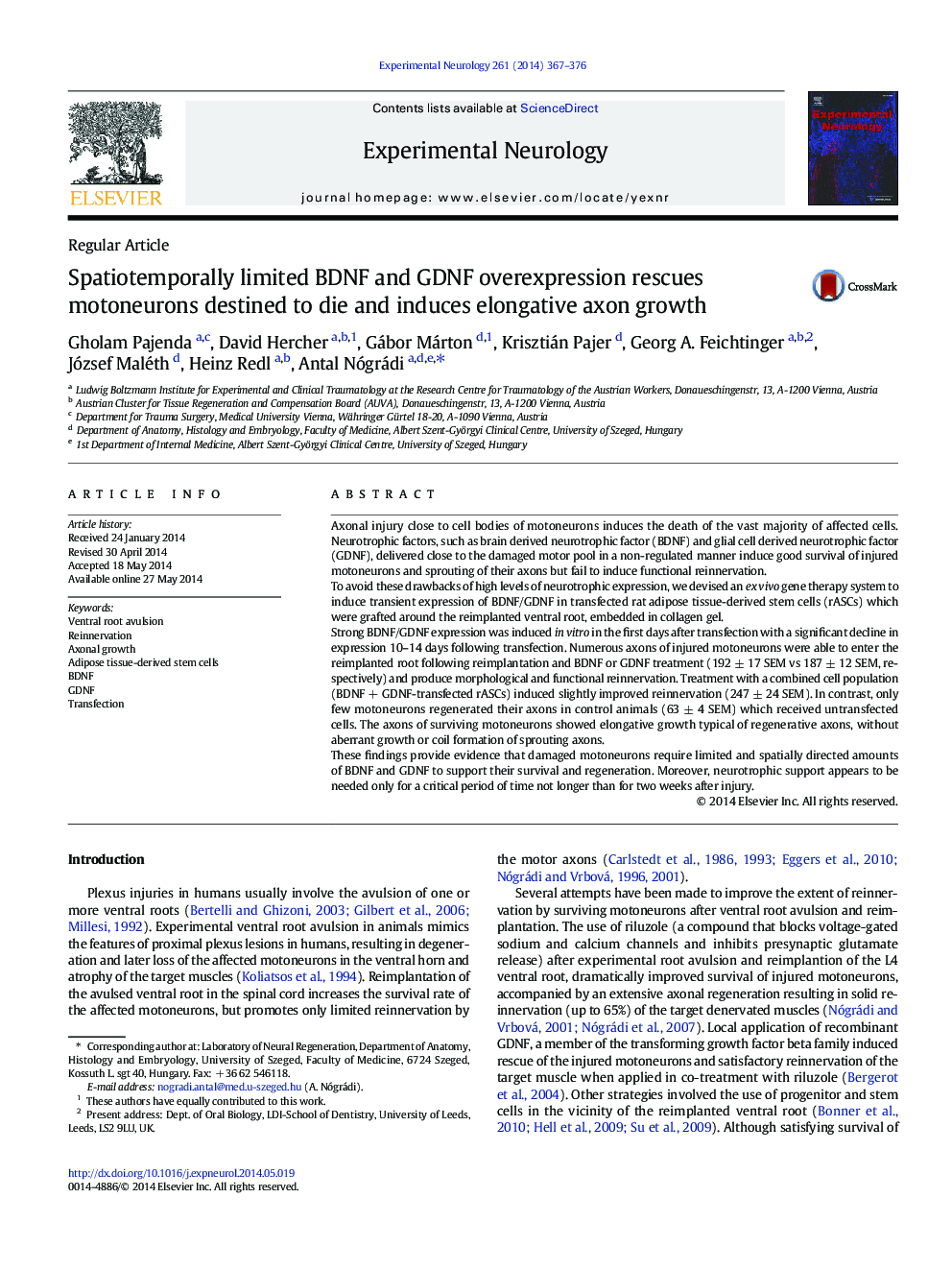| Article ID | Journal | Published Year | Pages | File Type |
|---|---|---|---|---|
| 6017650 | Experimental Neurology | 2014 | 10 Pages |
â¢Spatiotemporally limited GDNF/BDNF overexpression induces elongative axonal growthâ¢Controlled neurotrophic factor expression prevents excessive axonal sproutingâ¢Regenerating axons induce functional skeletal muscle reinnervation
Axonal injury close to cell bodies of motoneurons induces the death of the vast majority of affected cells. Neurotrophic factors, such as brain derived neurotrophic factor (BDNF) and glial cell derived neurotrophic factor (GDNF), delivered close to the damaged motor pool in a non-regulated manner induce good survival of injured motoneurons and sprouting of their axons but fail to induce functional reinnervation.To avoid these drawbacks of high levels of neurotrophic expression, we devised an ex vivo gene therapy system to induce transient expression of BDNF/GDNF in transfected rat adipose tissue-derived stem cells (rASCs) which were grafted around the reimplanted ventral root, embedded in collagen gel.Strong BDNF/GDNF expression was induced in vitro in the first days after transfection with a significant decline in expression 10-14 days following transfection. Numerous axons of injured motoneurons were able to enter the reimplanted root following reimplantation and BDNF or GDNF treatment (192 ± 17 SEM vs 187 ± 12 SEM, respectively) and produce morphological and functional reinnervation. Treatment with a combined cell population (BDNF + GDNF-transfected rASCs) induced slightly improved reinnervation (247 ± 24 SEM). In contrast, only few motoneurons regenerated their axons in control animals (63 ± 4 SEM) which received untransfected cells. The axons of surviving motoneurons showed elongative growth typical of regenerative axons, without aberrant growth or coil formation of sprouting axons.These findings provide evidence that damaged motoneurons require limited and spatially directed amounts of BDNF and GDNF to support their survival and regeneration. Moreover, neurotrophic support appears to be needed only for a critical period of time not longer than for two weeks after injury.
